Prairie Update, June 30. Post and photos by Dennis Plank
Dennis has been getting his knees muddy and his back sore pulling Scot’s Broom on the South Sound Prairies since 1998. In 2004, when the volunteers started managing Prairie Appreciation Day, he made the mistake of sending an email asking for “lessons learned” and got elected president of Friends of Puget Prairies-a title he appropriately renamed as “Chief Cat Herder”. He has now turned that over to Gail Trotter. Along the way, he has worked with a large number of very knowledgeable people and picked up a few things about the prairie ecosystem. He loves to photograph birds and flowers.
Prairie Update, June 30, 2020
The spring rush is over now and the rate of new species coming into bloom has slowed considerably. Mid-April to Mid-June have such a rush of activity that is seems impossible to keep up. There’s not time enough to take a ll the pictures and write something sensible about what’s happening. Suddenly, just about the official start of summer, things begin to slow down a bit, though it’s more of a shift to a different kind of activity. In addition to the new species coming into bloom, there are all the earlier species starting to set seed, creating new looks to the prairie, some of which rival in beauty the blooms themselves.
In the rush of new blooms, it’s easy to miss the seeds of the very early species, such as the Shooting Stars (though I’ve heard from the seed collecting team that they had a bad year for seed production, and indeed, I didn’t see very many of them where they are usually quite abundant). I also missed photographing the Small-flowered Wood Rush in seed, and probably many, many others.
Now the grasses are so high that most of the flowers still coming into bloom have difficulty rising high enough to be easily seen. However, there are several new ones that have been appearing lately.
First is the Showy Fleabane, Erigeron speciosus. This beauty forms clumps and blooms for quite some time. The plant that this spray came from was planted near our backyard water feature and is overcome by grasses almost every summer when I seem to run out of time to control them. Yet it comes back underneath every year and continues to enlarge itself. The purple ray flowers and yellow disc flowers make a very nice showing and it’s a great mid-season nectar source. I accidentally clipped this stem when trying to remove grasses from around it, so I took it inside to photograph where I didn’t have to deal with the wind.
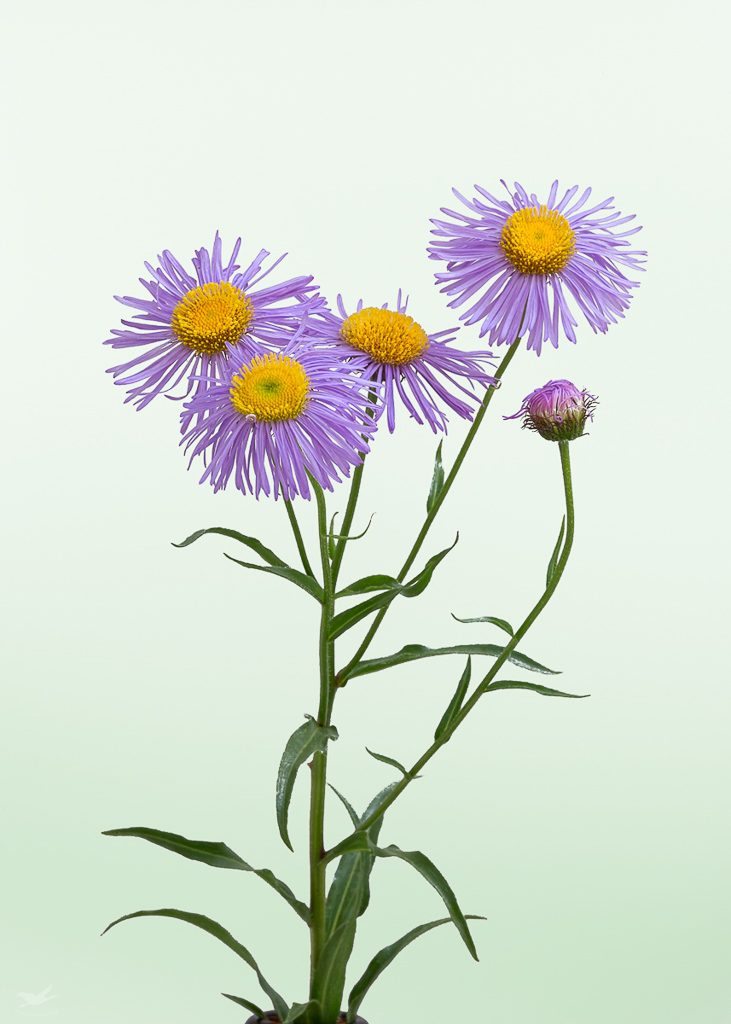
Showy Fleabane, photo by Dennis Plank
Another beauty that tens to favor areas with just a bit more moisture and/or richer soil is the local Delphinium, Upland Larkspur or Nuttall’s Larkspur, Delphinium nuttallianum. While the flowers hardly have the size and range of colors of the commercial cultivars, they are still a beautiful plant. Most Larkspurs are toxic, so this is definitely not recommended as a salad garnish. One of our neighbors asked for help in identifying a flower under an old apple tree. It turned out that she had a beautiful patch of these growing there. I’m jealous, as we have none on our property.
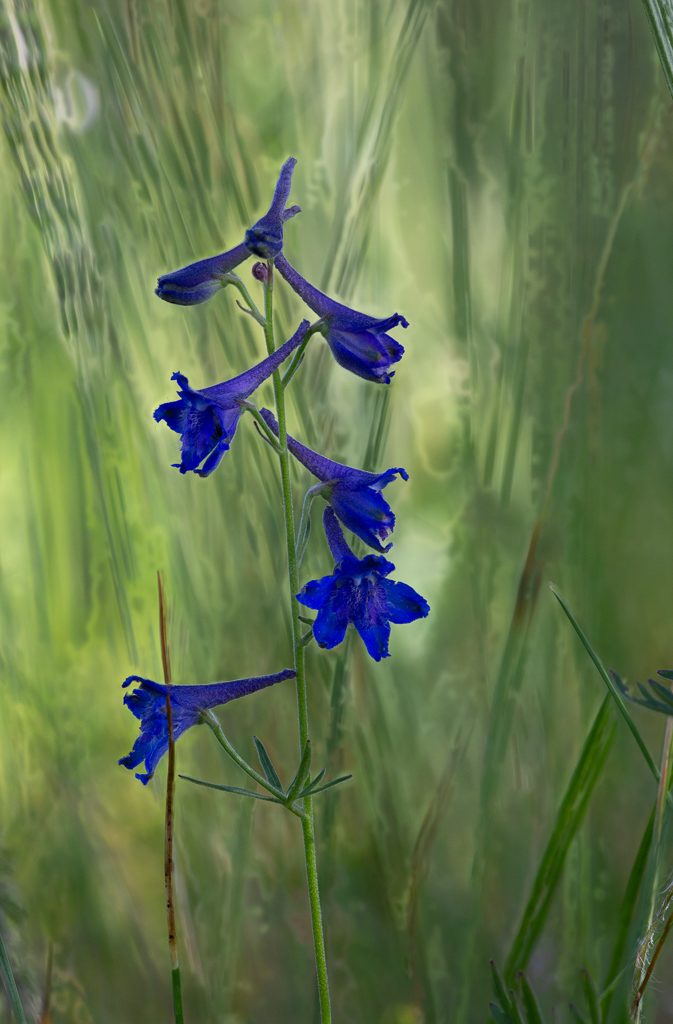
Upland Larkspur, photo by Dennis Plank
Another recent addition to the bloom scene is Harvest Brodiaea (which I always try to spell incorrectly). The scientific name is Brodiaea coronaria and it’s also known as Crown Brodiaea. The extremely thin and rather long stems make this one difficult to photograph in any kind of wind. By sheer luck, we mowed over a small patch earlier in the season and they still bloomed but at a lower level just above the regrown grass where they weren’t subject to the wind as much. I’ve found quite a few of these buried in dense non-native grasses (we have way too much on our property) and seeming quite happy to do so. The seeds don’t seem to spread too far, so I usually seem to find it in small to medium sized groupings. In the morning, the blossoms start out closed but as the sun gets higher and it warms up the petals keep spreading until they curve back quite a ways and seem to thicken. In any state of opening, it’s a very pretty flower.
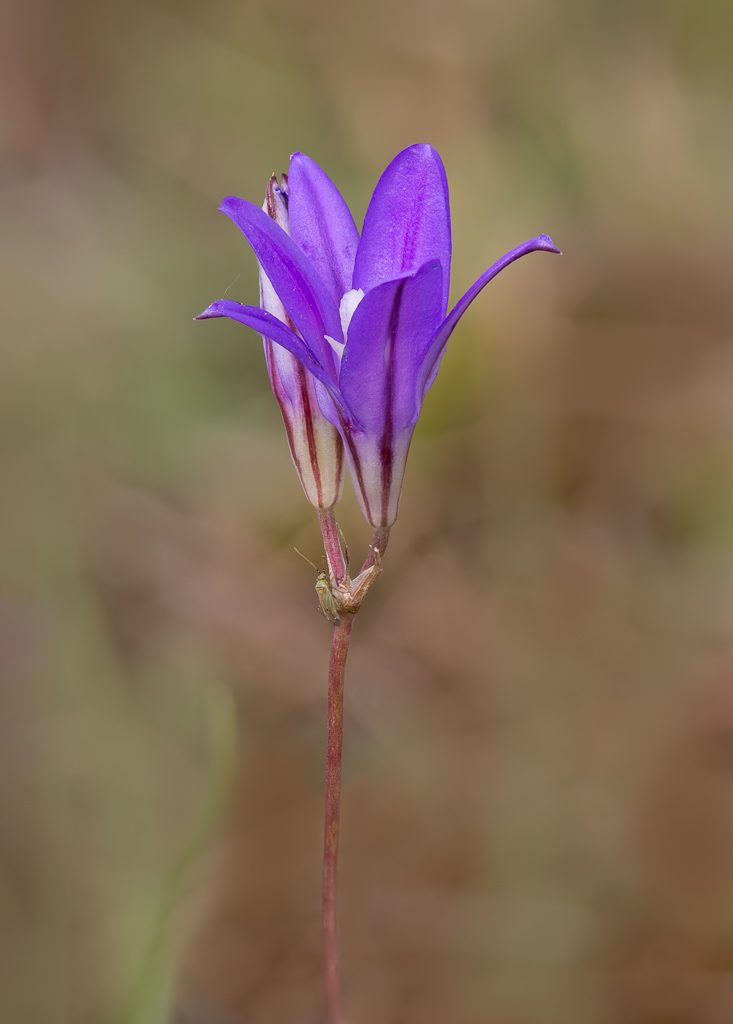
Harvest Brodiaea, photo by Dennis Plank
Another species that is omnipresent on the prairies currently is Self-heal or Heal-all, Prunella vulgaris. This is apparently a combination of an American subspecies and a European subspecies. Pojar and MacKinnon, in “Plants of the Pacific Northwest Coast” say that it is now present on all continents (perhaps excluding Antarctica?). The Self-heal label is from traditional medicines. this plant has been used to help heal wounds in cultures all over the world. It’s also a pretty and interesting looking plant and blooms for quite some time on our prairies.
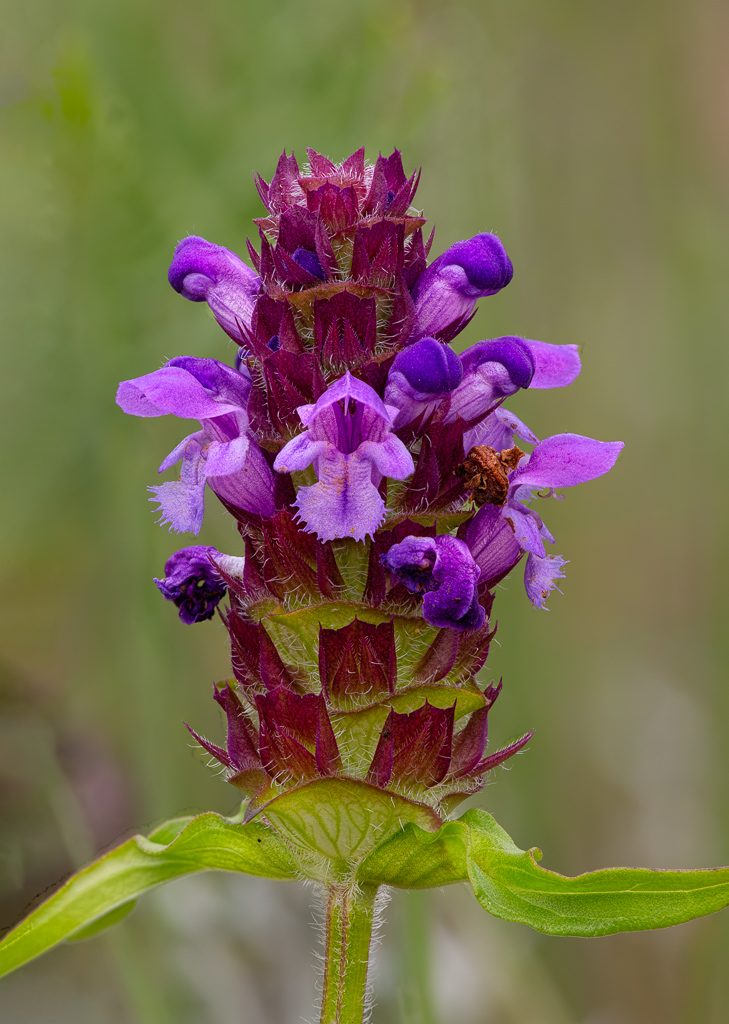
Self-heal, photo by Dennis Plank
During the last few weeks, most of the grasses have also been blooming, including the non-natives. Unfortunately, I don’t know my grasses at all well, and haven’t been able to get the pictures I’ve taken identified. However, if you look closely at grass flowers, you’ll be astounded by the beauty hidden in them. This one I know to be Roemer’s Fescue, Festuca roemeri, a native and one of the basic structural components of our prairies when they are in good condition. Please pardon the artsy presentation of this image-I was having fun with the grasses.
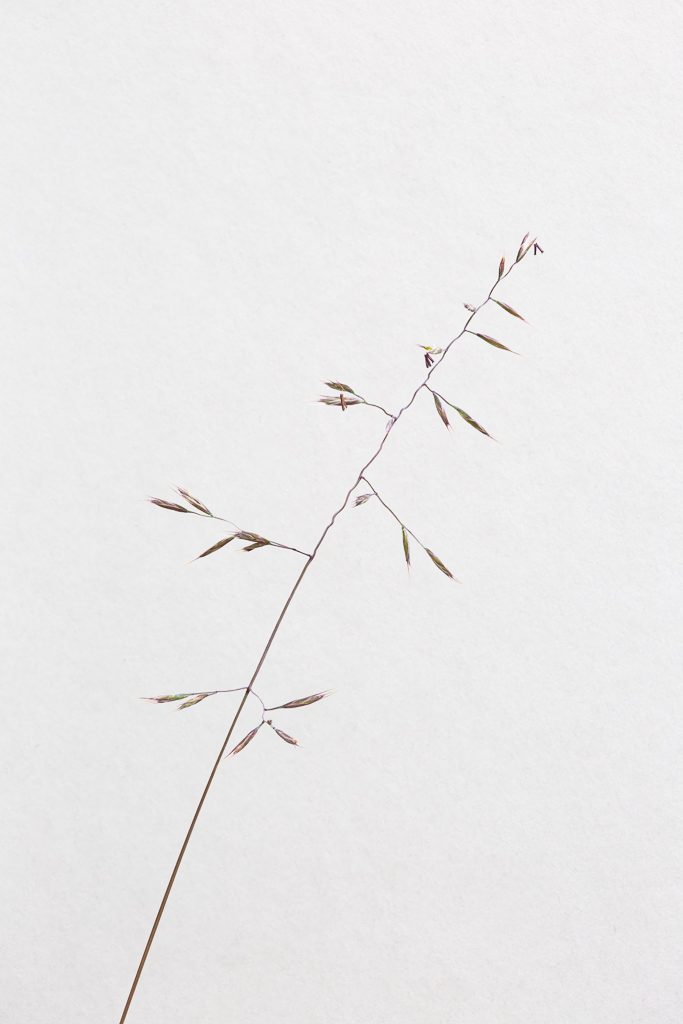
Fescue in bloom, photo by Dennis Plank
I mentioned above that the seeds have started forming and that I’d missed quite a few species already. I have managed to obtain images of a few.
Spring Gold, Lomatium utriculatum, is one of our earliest bloomers and one of the earliest to form seeds. I took some pictures of the seed head when it was about half developed which gives a good idea of the structure of the umbel and yesterday, I found a few late seeds (possibly sterile?) on one, so most of them have already gone to increase the population.
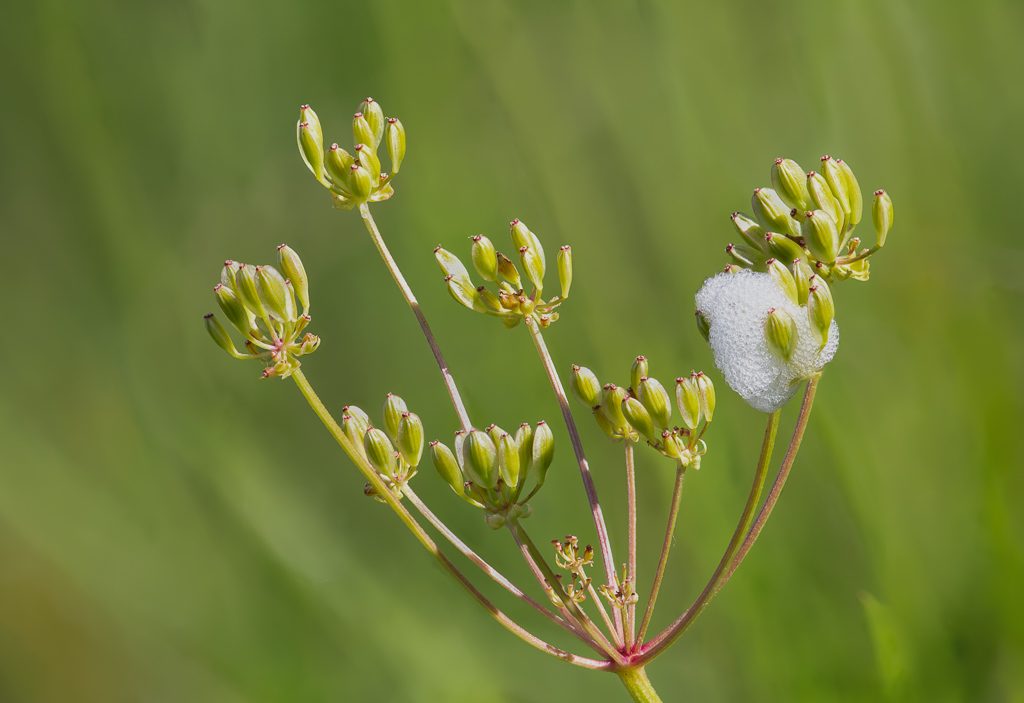
Spring gold in seed formation. The foam is from a Spittle Bug (or Spit Bug), photo by Dennis Plank
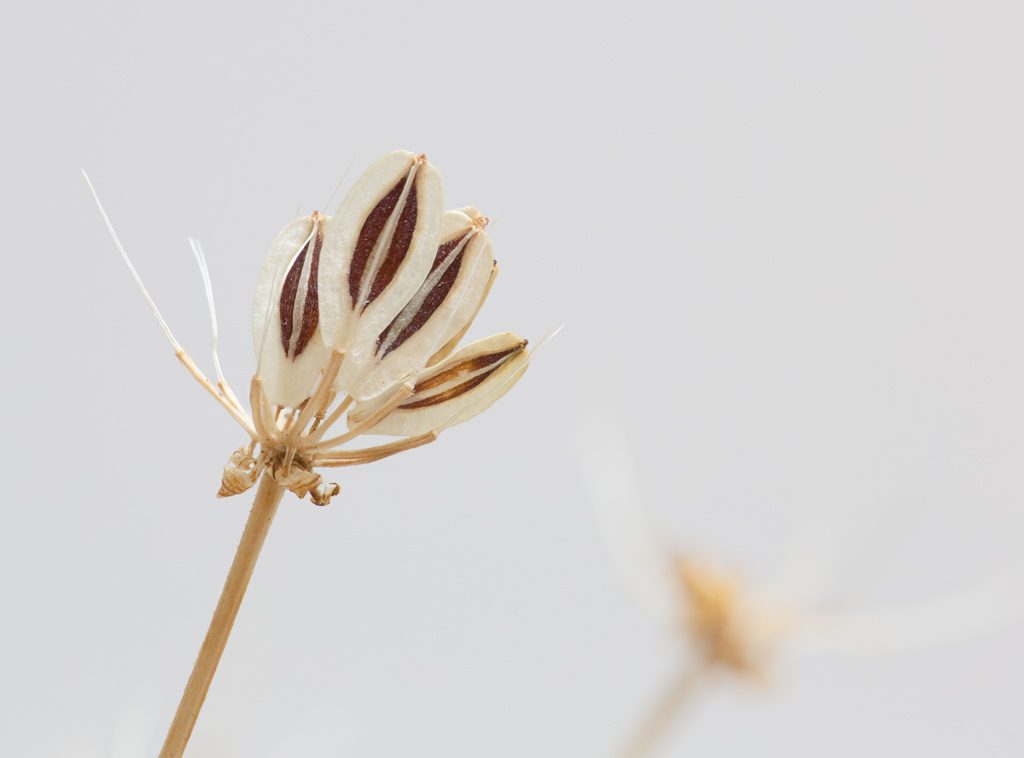
The last few seeds left on the raceme, photo by Dennis Plank
The iconic prairie species, Camas, Camassia quamash, did not bloom very profusely this year and to my eye, it seems that the seed set was even worse than the bloom. My wife has a semi-cultivated patch that seems to have done alright, but I’m finding very little of it on the open prairie either on our property or on Glacial Heritage. We refer to these seed pods as “castanets” because in normal years as you walk through the prairie in July there’s a continual rattle of Camas seeds in their pods. This year it won’t be that way. However, these bulbs survive and prosper under a covering of Scotch Broom for years, so one bad year of seed production won’t affect the population seriously. The picture below shows the empty seed pods of one I stole from my wife’s patch.
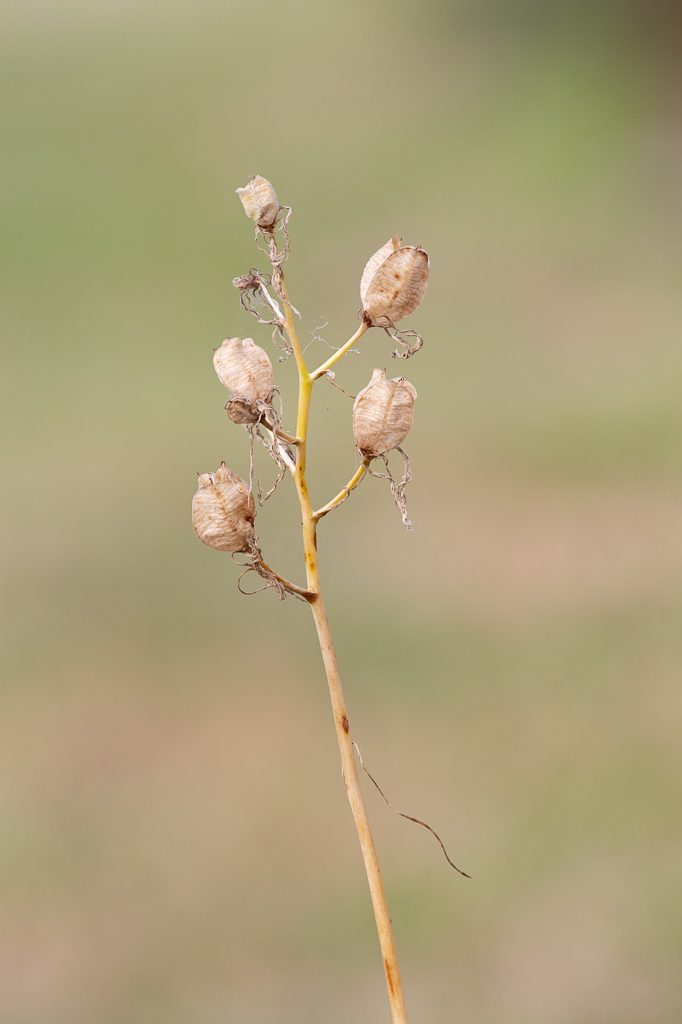
Common Camas seed pods, photo by Dennis Plank
Another oddity of this year’s seed production (at least it appears so to me), is that we had a super-abundant bloom of Cut-leaf Microseris, Microseris laciniata, yet I haven’t been able to find a single seed pod on our property. I went out to Glacial Heritage last Thursday to pull Scotch Broom and dig out Tansy Ragwort and I walked over an area that I knew had a great abundance of this species a couple of weeks earlier. I did find seed heads (that’s where I photographed this one), but they were no where near as abundant as the blooms had been.
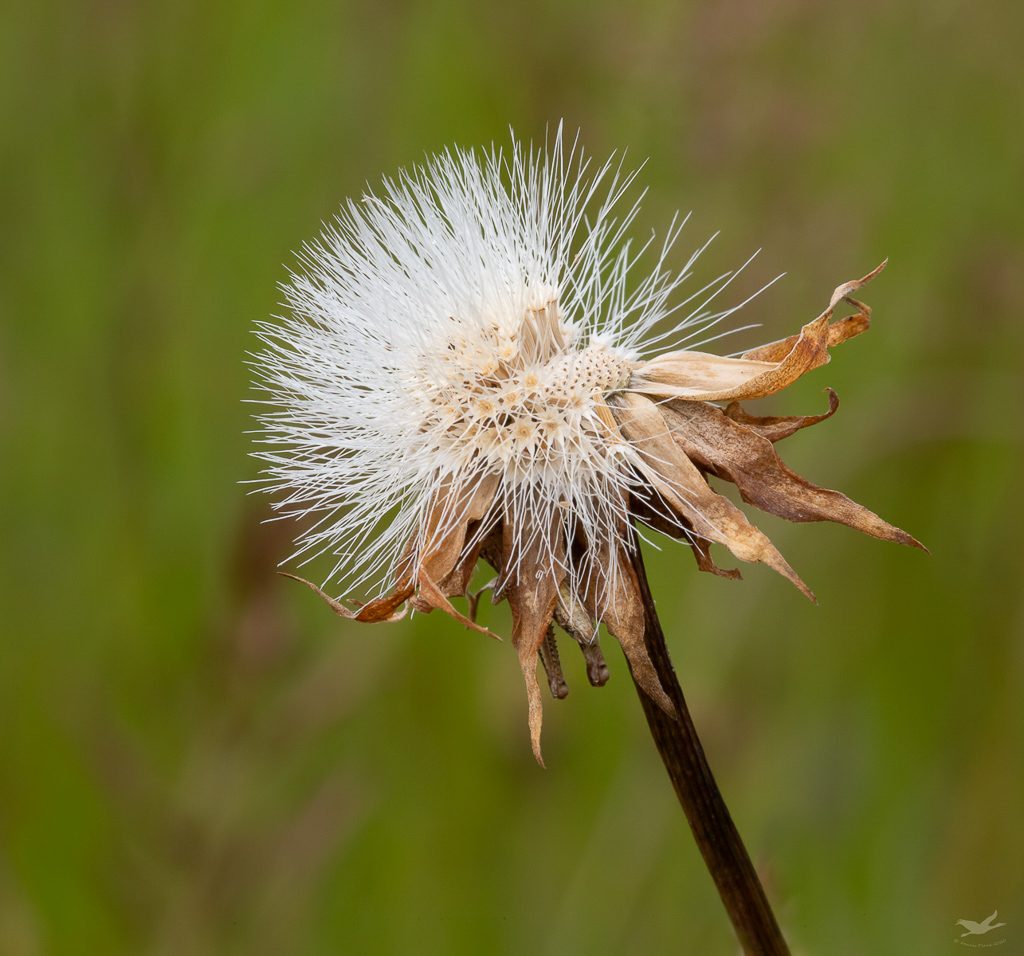
Microseris seed head with half the seeds already dispersed, photo by Dennis Plank
Though superficially of the “dandelion” form the Microseris seed head looks considerably different from our invasive dandelion look alike, Hairy Cat’s Ear, Hypochaeris radicata.
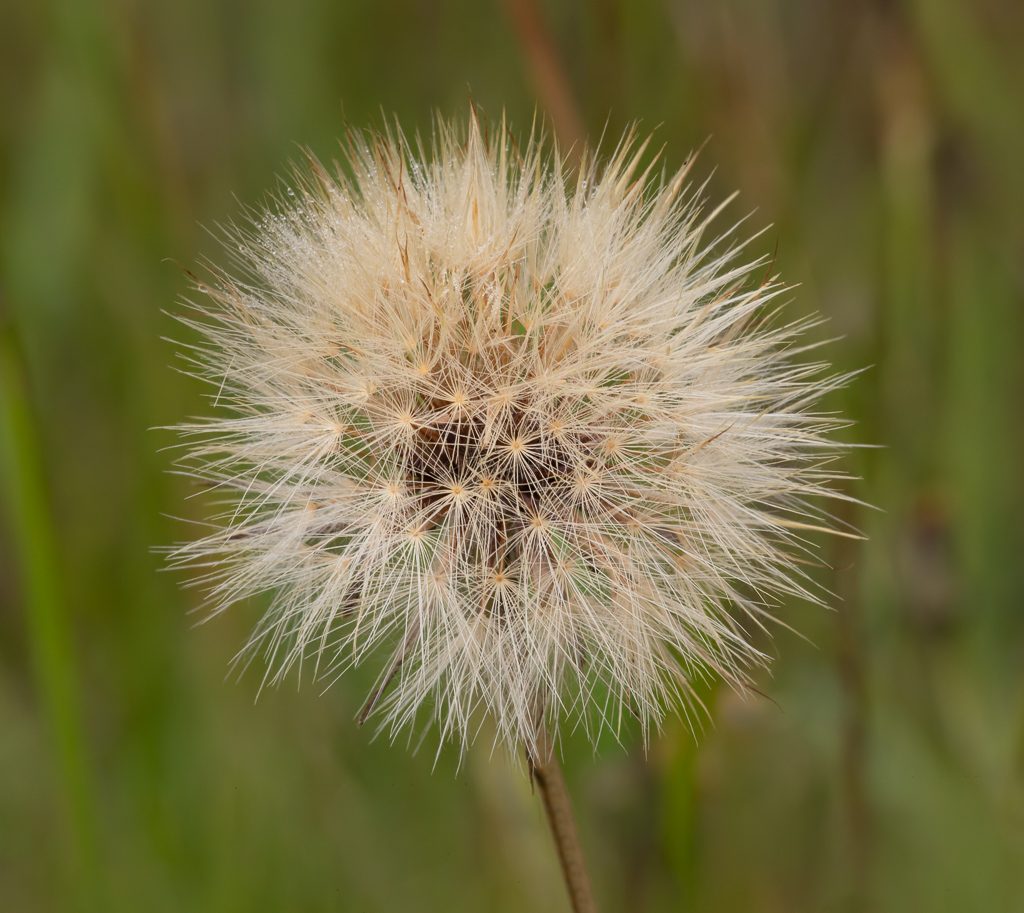
Hairy Cat’s Ear seed head. Note the differences from the Microseris, photo by Dennis Plank
For those of you who are interested in seeds and think you might want to try wild seed collection, send an email to ssvolunteers@cnlm.org and they can hook you up with the seed collection team. They’re back in business while practicing social distancing, so training might be a bit difficult, but I think they can figure it out. They’re out every Tuesday looking for seeds.

